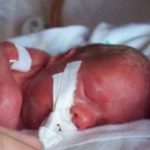1. In a large cohort of infants treated for retinopathy of prematurity, those who received anti-VEGF therapy were more likely to be later treated for pulmonary hypertension (PH) than matched infants who received laser therapy.
2. After adjustment for hospital and year, the association between anti-VEGF therapy and PH was not statistically significant.
Evidence Rating Level: 2 (Good)
Study Rundown: Retinopathy of prematurity (ROP) is a common and morbid condition in infants born preterm. Currently, it is most often treated with anti-vascular endothelial growth factor (VEGF) injections, laser photocoagulation, or both. Though anti-VEGF therapy is used in other retinal diseases, its use and risks in the ROP setting are incompletely understood. This multicenter retrospective study aimed to assess whether anti-VEGF therapy was associated with elevated risk of pulmonary hypertension (PH). Of about 1,600 included patients, 56.3% received anti-VEGF therapy. After propensity score matching between 491 patients each treated with anti-VEGF and laser, infants treated with anti-VEGF were 71% more likely to be treated for PH; this difference was narrowly statistically significant. The significance disappeared when adjusted for hospital site and year of treatment, although PH still occurred in a higher proportion of anti-VEGF-treated infants. Notably, anti-VEGF use increased over the study period and varied considerably between hospitals. Important factors such as ROP severity could not be included in the study’s scoring, and matching for overall clinical status including respiratory baseline was limited by the available data. However, an increased risk of pulmonary hypertension after anti-VEGF therapy is physiologically plausible, as lower systemic VEGF levels could impair pulmonary angiogenesis. This mechanism and the study results raise concern for systemic side effects of anti-VEGF therapy for ROP and warrant further study, ideally by randomized trial.
Click to read the study in JAMA Ophthalmology
Click to read an accompanying editorial in JAMA Ophthalmology
Relevant Reading: Retinopathy of prematurity: A review of epidemiology and current treatment strategies
In-Depth [retrospective cohort]: Infants born between 23 and 32 weeks gestation who were diagnosed with ROP and treated with either anti-VEGF agents — bevacizumab, ranibizumab, or aflibercept — or laser at 48 neonatal intensive care units between 2010 and 2020 were included. Patients who received both anti-VEGF and laser were excluded. PH treatment was defined as initiation of a pulmonary vasodilator 7 days or more after ROP therapy; 107 (6.3%) were treated for PH. Propensity scoring was based on gestational age at birth and at ROP treatment, sex, birth weight, race, insurance type, and maximal respiratory therapy two days before ROP treatment. An echocardiogram risk score reflecting the likelihood of echo based on hospital site and year was also included in the scoring. In the propensity score-matched cohort, 7.7% of infants receiving anti-VEGF and 4.7% of infants receiving laser were treated for PH for an odds ratio of 1.71 [95% confidence interval (CI) 1.00-2.95, p=0.047]. After adjustment for hospital and year, the odds ratio was 1.62 and 95% CI was 0.90-2.89 (p=0.10).
Image: PD
©2022 2 Minute Medicine, Inc. All rights reserved. No works may be reproduced without expressed written consent from 2 Minute Medicine, Inc. Inquire about licensing here. No article should be construed as medical advice and is not intended as such by the authors or by 2 Minute Medicine, Inc.


